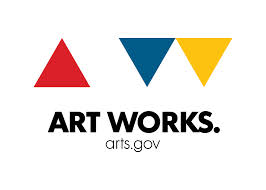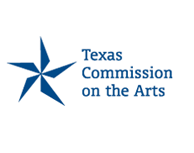Last fall, the McNay Art Museum in San Antonio named Mia Lopez as its inaugural curator of Latinx Art. The position is part of a national Leadership in Art Museums (LAM) initiative funded by the Alice L. Walton Foundation, the Ford Foundation, the Mellow Foundation, and Pilot House Philanthropy. LAM was launched to support museums across the U.S. as they work to address racial equity within staff leadership roles.
This need was highlighted through a series of demographic studies undertaken by the Mellon Foundation in 2015, 2018, and 2022, which illustrate the gap in racial equity among staff. Though there have been improvements over the years, the studies show that people of color make up approximately half of museum employees working in building operations, but only 23 to 33 percent of employees in fields such as collections, communications, administration, public engagement, and leadership positions.
Earlier this year I had the opportunity to chat with Lopez about her professional career, including the many experiences and organizations that shaped her path. Lopez, a San Antonio native, received her BA in Art History from Rice University. However, she spent summers in her hometown of San Antonio and like many emerging arts professionals in the area, had her first internship at the Contemporary at Blue Star. She spoke highly of then-director Bill Fitzgibbons, who identified her talents, such as writing, early on, and provided opportunities for her to hone those skills. That internship eventually turned into a paid assistant position for a summer.
As part of her undergraduate degree, Lopez penned a thesis on identity terminology in work by contemporary U.S. Latino artists. She noted that at the time, the trend was to use Latin@ or Latino/a. Reflecting on that time she told me, “There was this sense of clunkiness, like ‘Where do Latinos fit within this story?’”
Her thesis centered on artists like Mel Casas, Ricky Armendariz, and Wanda Raimundi-Ortiz. Lopez recalled that while undertaking this research in 2006, it was the first of many times throughout her career where there was little scholarship to draw on. There were no books and few articles to reference.
She remarked, “I tried my hardest to make use of the resources that I had, but it was challenging because there was just not this representation, let alone archiving, of the Latino presence in museums, which was already such a small amount to begin with.”
While working on her undergraduate degree, Lopez also spent time as a curatorial intern at the Contemporary Arts Museum Houston and Rice Gallery, and as an intern to the Executive Director at the Hirshhorn Museum and Sculpture Garden in Washington, D.C. She graduated from Rice in the spring of 2007, and that fall she began a position as the Programming Coordinator at the Museo Alameda.
The Alameda was a significant institution because it was established as the official State Latino Museum in Texas, and was the first formal Smithsonian affiliate outside of Washington, D.C. The institution came to Lopez’s attention following a write up in the New York Times. She spoke of the excitement in the air among San Antonians to have a museum not only dedicated to Latino art and culture, but one that was associated with the prestigious Smithsonian. Lopez first visited the new museum as a field trip chaperone for an Upward Bound TRIO class from Palo Alto College.
Lopez recalled, “I was fascinated. On the first floor they had highlights from across the Smithsonian that represented the artwork or notable accomplishments of Latinos. Then on the top floor, there was an exhibition of work by Kathy Sosa, and an exhibition about Celia Cruz. It was not just a pure art museum, there was kind of a mashup.”
From the Alameda, Lopez points to colleagues like Heather Snow and Ruben Luna who were supportive of her and helped her grow professionally. Additionally, interim director Eliseo Rios and later director Guillermo Nicolas both saw Lopez’s ambitions and gave her direction. Beyond learning from the staff, Lopez noted that the Alameda was special because she had the opportunity to meet artists like Jesse Treviño and work with guest curators like Rita Gonzalez.
Lopez noted her experience at the Alameda was a stepping stone to pursuing graduate school. She said, “I saw that for me to be effective in the work I wanted to do, I needed to go to graduate school, and I wanted to learn more. I was supported by everybody across the institution, because they all knew this was a temporary place for me and that I was going to go to graduate school. The plan had always been that I would come back to San Antonio, but I didn’t think it was going to take 12 years.”
Though Lopez considered graduate schools in Texas, New Mexico, and New York, ultimately she decided to pursue her MA at the School of the Art Institute of Chicago. Her application essay focused on the shifting demographics across the country and how in order for museums to stay relevant they would need to address this both in their programs and staffing. She received a full scholarship to the Art Institute, and in 2013, Lopez completed the three-year program and received two Masters degrees: one in Contemporary and Modern Art History, Theory, and Criticism, and the other in Arts Administration and Policy.
While in her graduate program, Lopez interned at the Museum of Contemporary Art Chicago, with Julie Rodrigues Widholm, and at the Smithsonian Latino Center. Ms. Widholm has previously curated a show that went to the Alameda and later would serve as the Director and Chief Curator of the DePaul Art Museum, where Ms. Lopez would work with her again.
Speaking about her internships and graduate work, Ms. Lopez remarked, “While I was in graduate school, I was articulating that I wanted to do contemporary art with a specialization in Latino art. I’ve always wanted to be working at these intersections, because I grew up biculturally. We live in a hybrid city here in San Antonio, and I don’t think that things are always neatly defined in boxes… the work I do crosses cultural borders, crosses borders of gender, race, class, and sexuality.”
Lopez remembered her time in Chicago fondly. She spoke about the excitement of living in one of the largest U.S. cities, visiting the National Museum of Mexican Art often, and the connections she made with arts professionals and artists. Following her graduation, she was a curatorial fellow at the Walker Art Center in Minneapolis, where she helped with International Pop, the largest exhibition she had worked on at that point in her career.
She told me, “That [exhibition] was really about expanding art history. I got to see firsthand what it took to write a new chapter of art history, and that was inspiring. It also made me think back about some of the work that we did at the Alameda. It fueled me because I saw there was still so much that needed to be done.”
Following her two years in Minneapolis, Lopez returned to Chicago, where she was hired as an Assistant Curator at the DePaul Art Museum. Soon after she arrived, the curatorial staff discussed their mission to expand the art historical canon to improve representation of women artists, artists of color, and artists who identify as part of the LGBTQ community. During her tenure, she curated and collaborated on a number of exhibitions, including Remember Where You Are, featuring the works of Jimmy James Canales, Jenelle Esparza, Melissa Leandro, and Emilio Rojas; Eric J. Garcia: The Bald Eagle’s Toupee; Betsy Odom: Butchcraft; Barbara Jones-Hogu: Resist, Relate, Unite; Jose Guerrero, Presente: A Memorial Print Portfolio; and A Matter of Conscience.
In early 2020, Lopez left the DePaul to focus on freelance projects, and three weeks later the COVID-19 pandemic shut everything down. Though many of her projects were canceled or postponed, she participated in a mentorship program through the Association for Art Museum Curators and worked on some remote projects. Lopez said she also used that time to reflect on the work she had done and where she wanted to go next.
In 2021, after her husband, who is a ceramicist and was adjuncting at the School of the Art Institute at the time, finished his class, the couple returned to San Antonio. Lopez was eight months pregnant and the young family was ready to be closer to home. She noted that she was fortunate to have some time to focus on her child and mothering without the need to rush back into a full time work situation.
Lopez said, “I took my time easing back into the city… giving myself time to be a mom — everybody should have that luxury. Then I did some freelance work and started to have conversations with amazing people around San Antonio. I was trying to decide where I should go, what I should do… if I should work at one museum or consult at multiple institutions… then [the Curator of Latinx Art] position was created and five people sent it to me asking if I had seen it.”
Though the curatorial position at the McNay was posted in early 2023, Lopez did not begin the role until October. She explained that this was partly because the McNay was going through a larger transition at the time, with their new director, Matthew McLendon stepping into his role in February of the same year.
As Curator of Latinx Art, Lopez does not work in the traditional curatorial way, where one curator heads a particular medium or time period within the museum collection. Instead, she works with various departments and other curators in a collaborative fashion. Her first big project was to assist with the exhibition de La Torre Brothers: Upward Mobility. She explained that the project was well underway when she began working at the McNay, but she helped with the educational components, finalizing texts, and engaging the community through tours and other public-facing aspects. Since then, Lopez has been working on acquisitions and other upcoming exhibitions that cannot be announced yet.
Speaking about the McNay, Lopez reminisced, saying, “This is our 70th anniversary year, which is really exciting because it feels like everybody in San Antonio has a McNay story. I came here in the 90s and did drawing lessons outside.”
Thinking more specifically about the need for the position Curator of Latinx Art, Lopez pointed to the fact that the McNay has had a long history of collecting work by Latino artists and that because of the demographics in San Antonio, which is a majority Hispanic/Latino population, it was important for the institution to have this role. She pointed to the work that institutions such as the Guadalupe Cultural Arts Center, San Anto Cultural Arts, and Esperanza Peace and Justice Center are doing, but was adamant that this type of work cannot only fall to culturally specific places.
She noted, “I hope that I am the first of many… that other institutions in San Antonio and beyond are able to bring in scholars and curators that have this interest and expertise. I know that funding is a challenge, but it has to be a priority.”














1 comment
What an insightful article. I look forward to seeing more exhibits curated by Mia at the McNay. What an exciting time for Latino art and artists in San Antonio.